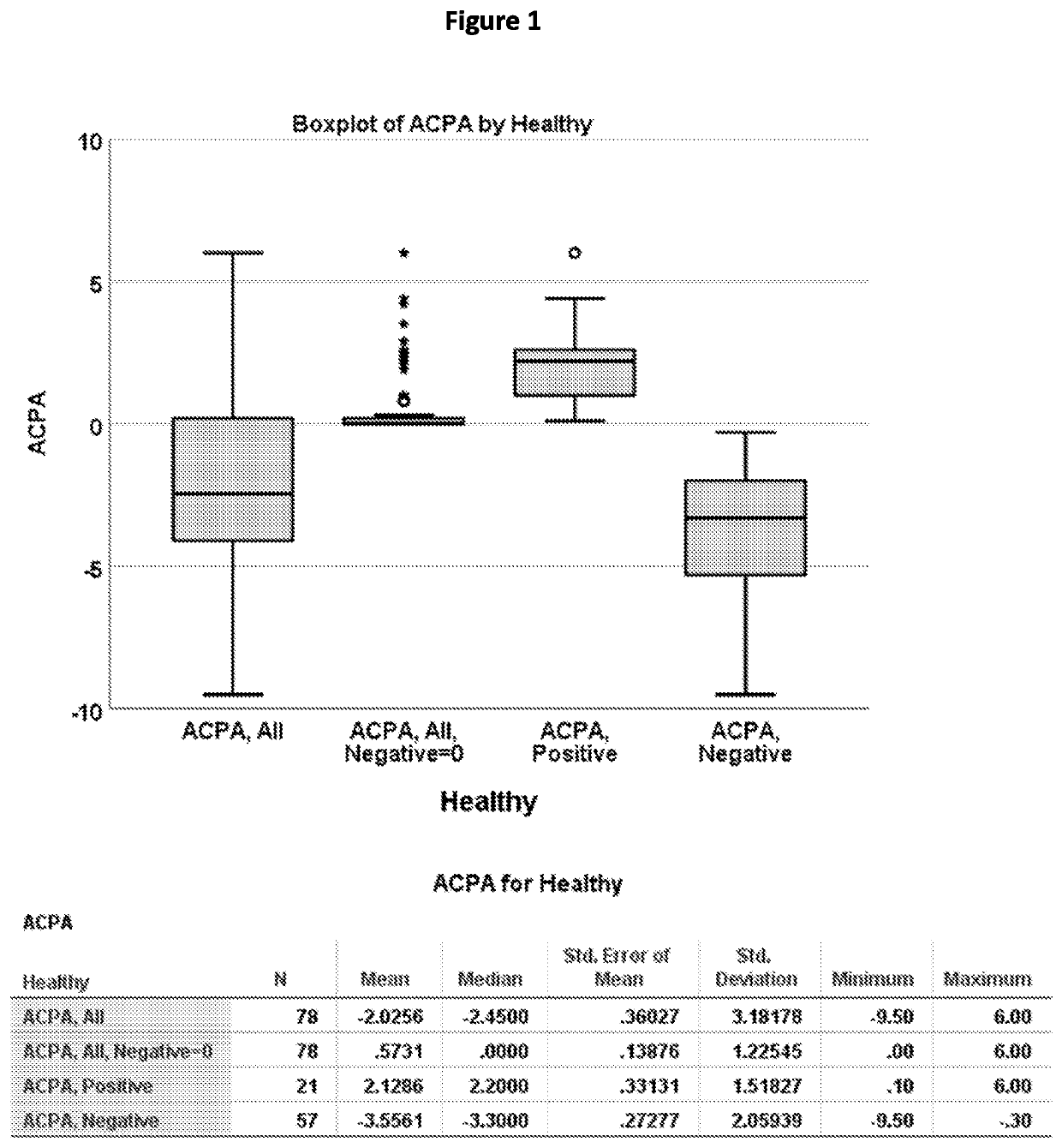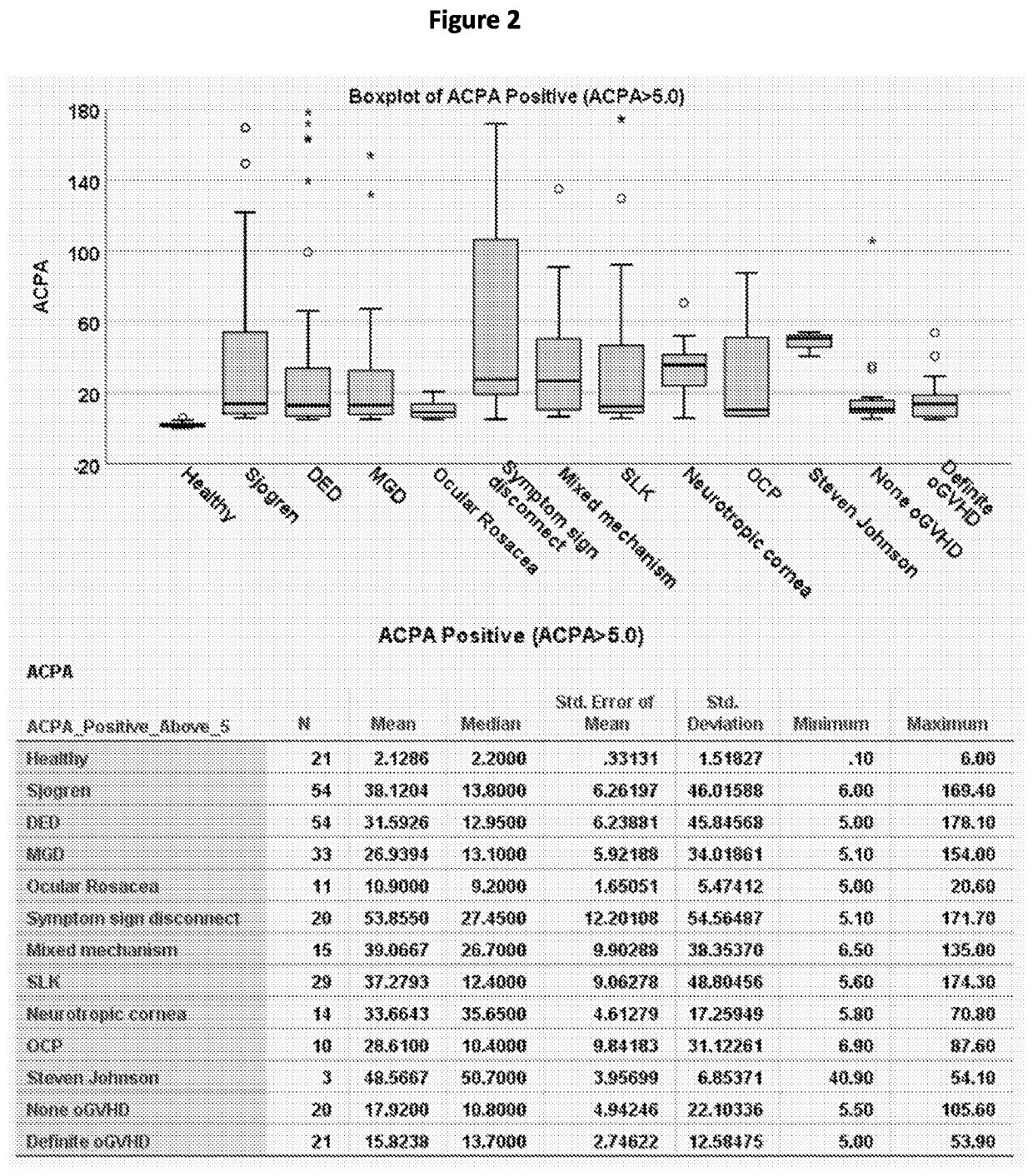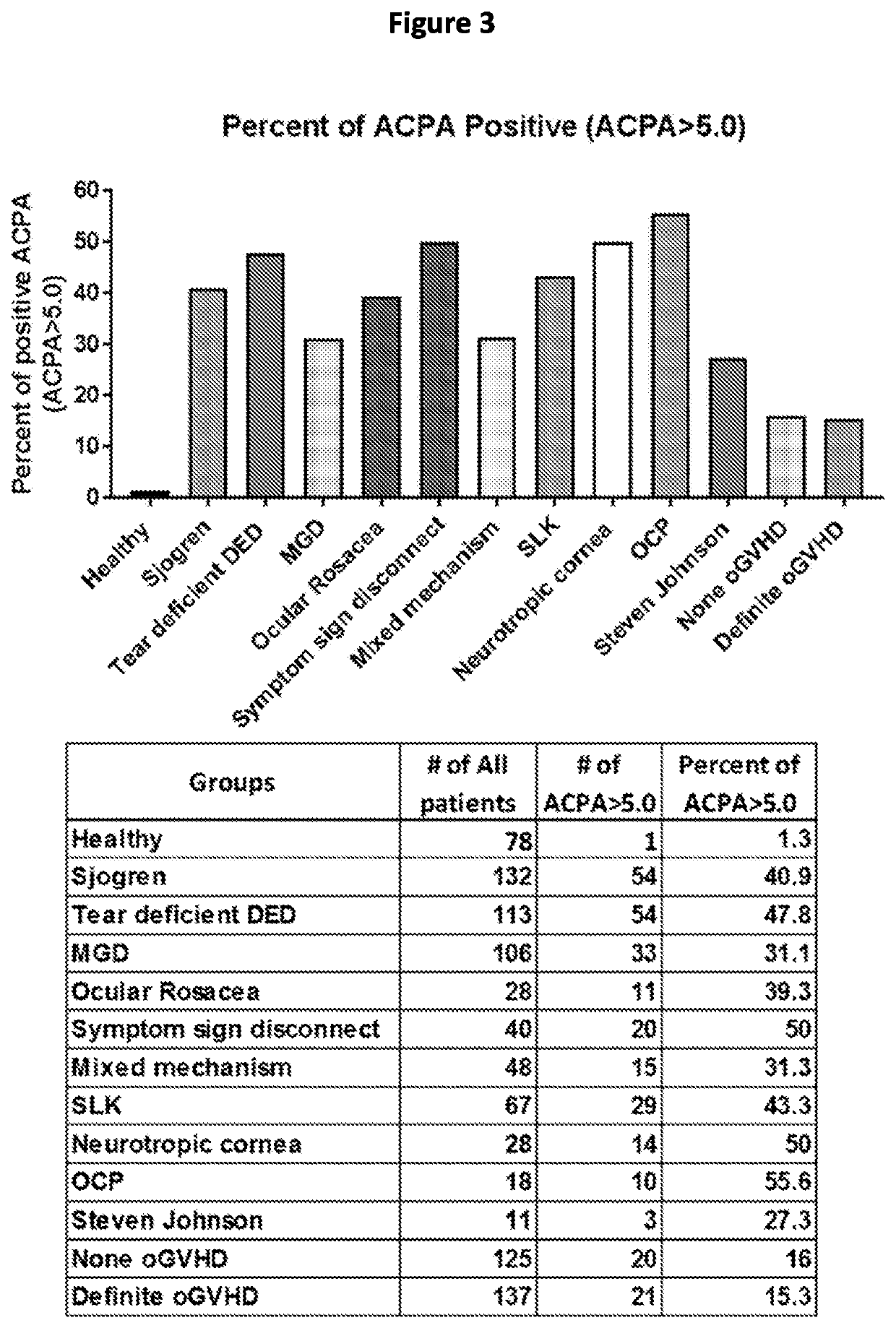Treatment and diagnosis of autoantibody-mediated eye diseases
a technology of autoantibody and eye disease, applied in the field of ophthalmic formulation, can solve the problems of many undesired side effects, time-consuming and frustrating treatment, and ineffective or variably effective, and achieve the effect of reducing levels and/or effects
- Summary
- Abstract
- Description
- Claims
- Application Information
AI Technical Summary
Benefits of technology
Problems solved by technology
Method used
Image
Examples
example 1
The Levels of Autoantibodies (ACPA) in Healthy Subjects and Ocular Surface Diseases
[0142]The presence of autoantibodies (ACPA) was demonstrated in ocular surface washings of healthy subjects (FIG. 1) to establish a cut-off for diagnosing a subject autoantibody ACPA positive. Ocular surface washings were performed in healthy subjects (no tear deficient dry eye disease (DED)) using 50 μl artificial tears and 10 μl of recovered washings were analyzed for ACPA levels by ELISA using commercial plates (CCP3). All Negative values were regarded as 0. The mean+3SD was used to establish the threshold for ACPA positive values. ACPA, All Negative=0 mean was 0.57 and 3SD1.2=4.17. Therefore, a cut-off of 5.0 was established.
[0143]The presence of autoantibodies (ACPA) was also demonstrated in ocular surface washings of patients with ocular surface disease (FIGS. 2 and 3). As shown in FIG. 2, the levels of ACPA were determined in ocular surface washings of patients with ocular surface disease. Thes...
example 2
The Inadequate Effect of Conventional Treatments on the Levels of ACPA
[0144]Experiments were performed to show the inadequate effect of conventional treatments on the levels of ACPA in ocular surface washings (FIGS. 4 and 5). FIG. 4 shows ACPA levels in tear fluid of Sjogren syndrome patients before and after initiation of conventional treatment. Compared to ACPA levels in Sjogren patients who are already on treatment, those patients who are not yet receiving treatment (Sjogren Pre-Rx) have significantly higher ACPA levels. After initiation of treatment (Sjogren post-Rx) levels are lower but still significantly higher as compare to health subjects. This data shows that even if Sjogren patients are getting treatment, the ACPA levels in the tear fluid are high, thus making the case for specifically targeting ACPA, such as with OSIG therapy, to reduce the contribution of ACPA to ocular surface disease.
[0145]ACPA levels in tear fluid of oGVHD of patients before and after initiation of t...
example 3
Citrullinated Proteins are Present on the Surface of the Eye in Patients with Ocular Surface Disease
[0146]Next it was demonstrated that citrullinated proteins are present on the surface of the eye in patients with ocular surface disease. As shown in FIG. 6, citrulline are expressed on non-epithelial cells in Sjogrens—impression cytology. The purpose of this experiment was to examine whether cells on ocular surface of Sjogren's patients are citrullinated. Study approval was obtained from the Institutional Review Board of the University of Illinois at Chicago (UIC). Informed consent was obtained from all participants after the nature and possible consequences of the study were explained. Research was conducted in accordance with the requirements of the Health Insurance Portability and Accountability Act (HIPAA) and the tenets of the Declaration of Helsinki.
[0147]Antibiotic was applied on the eye of a patient, and a filter paper (PALL, #60298) was applied to temporal conjunctiva and lo...
PUM
| Property | Measurement | Unit |
|---|---|---|
| Fraction | aaaaa | aaaaa |
| Fraction | aaaaa | aaaaa |
| Fraction | aaaaa | aaaaa |
Abstract
Description
Claims
Application Information
 Login to View More
Login to View More - R&D
- Intellectual Property
- Life Sciences
- Materials
- Tech Scout
- Unparalleled Data Quality
- Higher Quality Content
- 60% Fewer Hallucinations
Browse by: Latest US Patents, China's latest patents, Technical Efficacy Thesaurus, Application Domain, Technology Topic, Popular Technical Reports.
© 2025 PatSnap. All rights reserved.Legal|Privacy policy|Modern Slavery Act Transparency Statement|Sitemap|About US| Contact US: help@patsnap.com



